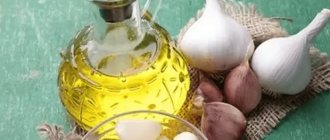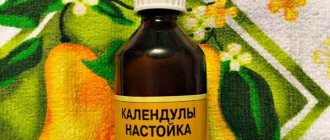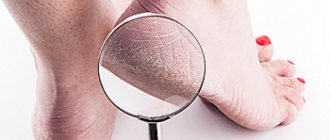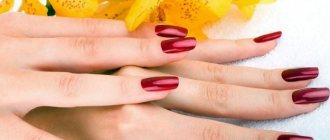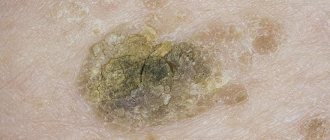Summer is the time for the sea, fruits, beaches, sundresses - and, of course, sandals. If in winter many representatives of the fair sex can still afford a not too thorough pedicure, then in summer the legs should be simply perfect. The most common problem during this period is the problem of rough skin on the heels, which, alas, cannot be hidden even with beautiful nail polish.
How to restore smoothness to your heels, and what do you need to know about the secrets of caring for them?
What is the reason for this, and what are the real reasons for rough skin on the heels?
- Lack of proper care.
- Drying of the skin. The reason is not unique to the summer period: sometimes this also happens in winter when the air in the apartment is dry.
- Wrong shoes. As you know, tight and poor-quality shoes contribute to disruption of the water-fat balance of the skin and its injury. In addition, unnatural and harmful materials for the skin can cause irritation, allergies, increased sweating and, as a result, dry skin.
- Poor nutrition. A lack of vitamins always affects the skin with cracks, dryness, irritation and other manifestations. Rough heels are often found in girls who are constantly on diets. Basics of proper nutrition for beauty and health
- Excessively intensive heel care. Yes, this happens! For example, in the case of too frequent and intense peeling, which requires time for skin restoration (more than once a week, this procedure is not recommended).
- The tap water is too hard
- Frequent hypothermia - or, on the contrary, overheating of the legs.
- Use of low-quality cosmetics (including soaps and gels).
Possible medical reasons:
- Fungus. The most common cause of dry and rough skin with cracks. Unfortunately, the fungus manifests itself not only with these symptoms, and in the absence of proper treatment, the legs take on a very unsightly appearance, which is also accompanied by itching, sweating and other troubles.
- Diabetes mellitus type 2. In this case, it is very difficult to deal with skin problems, and you cannot do without consulting a specialist.
- Problems in the endocrine system. Issues of aesthetics (heels, in this case) are resolved after (or simultaneously) with treatment.
- Obesity. With this disease, the full blood supply to the lower extremities and their connection with the central nervous system is disrupted, the skin on the feet becomes thinner, and there is a tendency for the skin to crack.
- Psoriasis. With this disease, the entire immune system does not work well, and creams and hygiene alone will not get rid of rough skin on the heels - an integrated approach is needed.
It is important to understand that serious problems with the skin of the feet can be a very warning sign. Therefore, in the case when you cannot cope with cracks on your own, and the accompanying symptoms cause you inconvenience, it makes sense to consult a dermatologist and therapist.
Types of pedicure - which one to prefer?
Rating of the best creams that eliminate dryness and cracked heels
Cream for cracked heels doesn't have to be expensive. Good body care products can be found in different price segments.
Taking into account customer reviews, the site editors bring to your attention the best skin care creams for heels.
Eveline Softening Cream
The “Softening” restoration product is a unique drug with which all cracks heal within a week and the keratinized layers of the skin of the feet are eliminated.
The cream contains natural betaine and wheat germ oil to maintain tone, increase elasticity and optimal hydration of the skin. It helps relieve irritation; during its use, the skin smoothes and becomes elastic.
Vitamins of groups A, E and F included in the ointment nourish the epidermis and stimulate the restoration of damaged cells. Chamomile extract relieves irritation and softens dry areas of the foot. With menthol, the epidermis is refreshed, toned, and roughness is removed. In addition, it has an antibacterial effect. Camphor heals wounds and disinfects.
The cream strengthens the skin surfaces and prevents the formation of new cracks, which become soft, elastic, and quickly recover.
The cream should be applied to cleansed feet 2 times a day with active massage movements.
Country of origin: Poland.
Cost: 99 rubles.
Eveline Softening Cream
Advantages:
- heals wounds quickly;
- softens well;
- nourishes and restores;
- refreshes and tones;
- budget price.
Flaws:
- fatty;
- takes a long time to absorb.
Nanoheels Cosmetic cream Heal
The healing agent is suitable for applying to dry, cracked feet. Treats cracked heels that appear as a result of household injuries, fungal diseases or diseases associated with high sensitivity of the skin.
The composition includes glutamic acid, which helps restore the structure of the epidermis.
The composition with panthenol, beeswax and folic acid stimulates the production of collagen and elastin. Essential oils of lemon, lavender, and lemon balm refresh your feet.
The drug has an antifungal effect.
The composition does not contain parabens or sulfates, which have a negative effect on the body.
It should be used 2 to 3 times a day by applying the product to the crack area.
Country of origin: Russia
Cost: 230 rubles.
Nanoheels Cosmetic cream Heal
Advantages:
- absorbs quickly;
- heals well;
- It is used sparingly.
Flaws:
- there is no cumulative effect.
Bielita cream Pro pedicure
It is a healing agent for effectively combating the problem of dryness and cracks in the epidermis of the legs.
The composition contains active medicinal ingredients that can moisturize the skin for a long time, replenish lipid deficiency and prevent the secondary appearance of cracks:
- natural vegetable oils;
- complex of beeswax, allantoin, bisabolol;
- 15% urea;
- extract from calendula and celandine;
- essential oils of rosemary and lemon.
The product gives a good effect when working with “diabetic” feet.
Directions for use: Apply the cream to cleansed feet and let it absorb. An increased amount of the drug can be applied to cracks and areas with very rough skin.
Country of origin: Belarus.
Cost: 297 rubles.
Bielita cream Pro pedicure
Advantages:
- nourishes and moisturizes;
- optimally heals wounds;
- Helps those with diabetes (presence of urea).
Flaws:
- does not cope well with rough skin on the feet.
DOCTOR Cream with urea
As part of the product for softening rough skin and corns, the active base consists of urea, glycerin, oak bark, celandine, and tea tree essential oils.
Used to care for feet, effectively combating the appearance of cracks and calluses. With regular use, it softens the epidermis, softens and nourishes it.
It is highly popular among consumers for its active ingredients and low price.
It is recommended to apply the ointment once a day to clean feet.
Country of origin: Russia.
Cost: 193 rubles.
DOCTOR Cream with urea
Advantages:
- natural ingredients;
- hypoallergenic;
- long lasting effect;
- budget price.
Flaws:
- rapid consumption of funds;
- slow action.
Gehwol Healing ointment for cracked heels Schrunden Salbe
A new product on the Russian market is considered to be a product for restoring the epidermis of the legs from the German company Gehwol. An ointment for the care of severely rough, dry and cracked skin is based on a special medical soap and a carefully selected line of natural ingredients: essential oils, natural fats, vitamin B5, bisabolol and panthenol.
This is a real lifesaver in the fight against dry and cracked skin. After the first use, the feeling of pain and discomfort goes away, and the inflammatory process decreases. With regular use, the epidermis restores its natural elasticity, becomes smooth and protected. Peeling, redness, and discomfort go away.
Since the ointment is more like a medical preparation than just a regular cream, it takes longer to absorb and needs to be used correctly - applied to the feet, put on cotton socks, and left overnight.
Treatment is prescribed strictly individually and depends on the profile of the disease
Country of origin: Germany.
Cost: 850 rubles.
Gehwol Healing ointment for cracked heels Schrunden Salbe
Advantages:
- effective;
- Suitable for all skin types;
- cooling effect;
Flaws:
- presence of a “medical” smell;
- Long-term use is not recommended;
- high price.
Compliment Foot Cream Revitalizing
A very effective product that nourishes, moisturizes and restores excessively dry epidermis of the legs. Regular use helps to avoid hardened heels and the appearance of new cracks, and provides reliable prevention against secondary wound formations.
Replenishes moisturizing components for supple and smooth feet. Sea buckthorn oil contained in the cream improves regeneration processes and has antioxidant and anti-inflammatory properties. The vitamins included in the composition nourish the epidermis, and pine needle extract restores and heals cracks, relieves pain, and improves damaged structure.
Country of origin: Russia.
Cost: 66 rubles.
Compliment Foot Cream Revitalizing
Advantages:
- good hydration;
- perfectly nourishes the epidermis;
- budget cost.
Flaws:
- weakly relieves itching.
Proper cleansing of heels at home - instructions
Taking care of your heels in a beauty salon is a pleasant experience. But not everyone has the means, time, or desire to go to salons.
And it’s much easier to take care of your heels at home. Especially if you know exactly how.
First, steam the legs in the bath.
It is recommended not to neglect this stage of care, because it is the baths that help quickly soften the skin for easy removal of dead cells, nourish and moisturize the heels.
And if you also give a foot massage before the bath, the result will be even more surprising, pleasant and long-lasting.
The massage can be replaced with regular walking on a hard massage mat or with your feet moving peas, balls, etc.
Which bath should you choose? Best recipes:
- Dairy. We grate classic baby soap on a coarse grater, add 1 tbsp of shavings and 0.5 liters of warm milk to the basin, then hot water. Keep the legs until the water cools down.
- Herbal. We take 1 tbsp of dry herbs: oak bark and chamomile, celandine and calendula, St. John's wort. Pour 1 liter of boiling water, leave for a day, and in the evening pour the strained broth into a bowl and dilute with boiling water.
- Soda and soap. For 1 basin – ½ cup of soap shavings and the same amount of soda, plus boiling water. Keep the legs for about 10 minutes.
- Citrus. 2-3 hours before the procedure, brew citrus peels in boiling water, and then simply add the broth to the water, plus 1-2 drops of orange essential oil.
- Nettle. In a bowl of hot water - 1 liter of nettle infusion (from 2 tbsp of dry nettle).
- Oily. Aroma bath for feet and soul. For 1 bowl – 2-3 drops of your favorite essential oil.
If you have time for daily heel care procedures, then instead of files and pumice stones, it is better to use scrubs to exfoliate rough skin. They act more gently (a thick layer of rough skin cannot be removed), but with regular use of scrubs, the dream of “baby heels” becomes a reality.
You can make scrubs at home with your own hands if you want to save on store-bought products - which, by the way, often contain harmful ingredients.
Important! We apply the scrub only to already steamed feet, and after the massage with the scrub, we leave the mixture on the heels for 7-10 minutes - that is, we are not in a hurry to wash it off.
- Sugar with butter. Mix olive oil and sugar 1:2, apply to feet, massage.
- Coffee with sea salt. Mix 1:1 tablespoon coarse sea salt and coarsely ground coffee, add 2 tbsp kefir, apply and massage.
- Cocoa with sugar. For 2 tsp sugar - 1 tbsp cocoa (not nesquik, but normal confectionery cocoa powder) and milk for binding. Mix, apply, massage.
- Citrus with salt. For 1 tbsp of fine salt - the peel of 1 orange, ground in a blender.
- Salt with honey . For 2 tbsp honey – 1 tbsp sea salt.
- Sand with sour cream. If you live by the sea, then this option is for you. If there is no sea sand, we take regular sand. For 1 handful of sand - 2 tbsp of fat sour cream. Mix, apply, massage.
Heel bath recipes
If the soles quickly become coarse and rough, there is no need to wait for changes to occur; you should immediately start caring for them.
You can also use home remedies to make your heels soft. To make your heels soft and smooth at home, heel baths are recommended.
There are various homemade bath recipes for steaming heels, which quickly make your feet smooth.
But it is important to consider that if the steaming procedure is not carried out for a month, then it will not be possible to return the soles to their previous appearance in one manipulation.
When using foot baths at home, using simple recipes, they are combined with massage of the soles. It is advised to massage, use a brush and massage accessories.
Sea salt for baths
How to make your heels soft and smooth using such an affordable product as sea salt. These are the best recipes that are recommended for use, thanks to which you will ultimately acquire well-groomed, healthy, soft heels.
How to steam your heels at home:
- Steam your feet by adding 4 large tablespoons of salt and 5 drops of eucalyptus oil. The components are mixed. The feet are steamed for 20 minutes, then the steamed foot is treated with pumice.
- 3 large spoons of soda and salt are diluted in boiling water. Feet should steam in the bath for 20 minutes. Such manipulation has a disinfecting effect on the legs.
- Eucalyptus, rosemary and lavender oils are dripped into the liquid in equal volumes. Add salt to the product and stir. Treat limbs for about 20 minutes. This manipulation will help quickly eliminate fatigue and tension.
- Pour oil into a container with liquid - chamomile and lavender, 3 drops each. Then dissolve 4 tablespoons of salt, combine the ingredients and send to the heels for 15 minutes.
After the bath, wash and soften with ointment.
Peroxide bath
To keep your heels smooth, use hydrogen peroxide at home. Peroxide is an aggressive medicine, so when using it to make your heels soft, you should follow the recommendations.
How to get your heels in order quickly using peroxide home remedy.
We bring the soles to their natural state as follows:
- Mix the solution 6 to 1 in cold water. Take a bandage, soak it in the medicine and rub for up to 5 minutes. Next, the heels are cleaned using pumice.
- Steam your heels at home using peroxide. A heel bath with peroxide may include such components. Take 1.5 liters of boiling water and 4 large spoons of peroxide. To get soft heels, you should steam them for about 10 minutes. Afterwards, the feet are cleaned using pumice and a file.
- Treatment of cracks, roughness and roughness of the soles is carried out with the inclusion of salt. Warm liquid is poured into the container and 2 tablespoons of salt are added. Leave the heels in the bath for 7 minutes, then pour in 3 tablespoons of peroxide, followed by continuing therapy for another 5 minutes.
Contrast baths
You can make soft heels at home using contrast baths.
This option for eliminating rough areas is simple. Initially, you will need to place the soles in boiling water, and then in cold water.
Herbal baths
What else is recommended to soften the skin on the heels at home? Baths are carried out, adding homemade medicinal plants.
You will need to take the same volume of dried plant, using chamomile, calendula, St. John's wort, oak bark, celandine.
Pour boiling water over the entire mixture and leave to steep for a day. In the evening, the medicine is filtered and sent to the heels for steaming.
Soap and soda bath
To soften the heels, make foot baths using a soap and soda solution.
To steam the heels in the existing product, using a grater, rub soap, take 20 grams according to the recipe, dilute it in 2 liters of liquid. Next add 35 grams. soda The feet are placed in the basin for 20 minutes.
When there are callous formations and hardened areas, the treatment process is extended for another 20 minutes.
Milk soap bath
To soak your heels at home in a milky soap solution, soak as follows:
Using a grater, grate baby soap and place it in a basin. Take 0.5 liters of milk onto a large spoon of the resulting product, diluting everything with boiling water.
Send the heels into the solution and do not remove them until the water has cooled completely.
Apple cider vinegar baths
To whiten your heels and soften your heels at home, it is recommended to use this option.
Add 30 ml of vinegar to the water. Next, place the heels for 20 minutes. At the end of the procedure, it is recommended to keep your feet in a cool liquid.
Bath with glycerin
By applying this type of heel softener, like glycerin, you can quickly heal wounds on the feet and eliminate cracks.
So, to admire soft heels at home, a bath with glycerin is recommended.
Pour water into a container, then add a teaspoon of glycerin, lower your limbs for 15 minutes. During this time, the skin will soften, which will eliminate trampled areas with a brush. The heels are lubricated with greasy ointment.
At home, to soften the soles, all foot baths are done every day, for a course of 7 days. This will allow the skin on your heels to return to its healthy appearance.
What's next?
- If you don’t have a scrub (or are too lazy to make one), then use a file after the bath to remove rough skin. It is advisable to use only the fine-grained side: rough grinding of the heels contributes to the appearance of scratches, cracks - and even greater dryness. Smoothness and tenderness of the heels can only be achieved by regular procedures with a light and non-traumatic scrubbing effect.
- The use of pumice stones is strictly not recommended. Firstly, they injure the skin of the feet, and secondly, they are a source of bacterial growth.
- When using a file, first lubricate dry heels with cream and wait for absorption - this way the procedure will be more effective.
- We use a slightly damp file, but do not put three heels under water! We polish the heels until the rough skin is completely removed.
- Now we rinse the feet in warm water, wipe them dry, generously lubricate them with rich cream and put on cotton socks.
At least 2-3 similar procedures per week - and you will not be ashamed to wear open shoes outside.
How to treat our feet
If the resulting dryness of the feet cannot cause major unpleasant symptoms, then serious cracks can become a cause or symptom of health problems. Without proper care, dirt and dust getting into cracks can lead to serious problems. You can try to solve this problem yourself if the state of the feet is not very neglected. After taking some softening procedures, you can get rid of rough skin by steaming, compresses, and using ointments.
If there are more serious problems, then cosmetic procedures alone will not be enough; here you need to consult a doctor and prescribe special drug treatment. A dermatologist can determine the cause of the cracks and prescribe medications. Vaseline-based ointments are usually prescribed to soften and moisturize the epidermis, which have bactericidal cleansing properties. Before using this medicine, your feet should be steamed well in hot water, adding boric acid to it. Then lubricate the heels with an anti-crack agent (Balmed, Zazhivin, Lamizin) and leave it overnight.
You can also use pharmaceutical moisturizers that maintain elasticity, relieve pain and heal wounds. Cracks can be treated at home yourself if your health condition is not critical.
To obtain a positive effect, treatment must occur under the supervision of a doctor.
The doctor determines the cause of the formation of cracks and suggests an appropriate course of treatment. In addition to emollient ointments, he prescribes appropriate antifungal drugs or medications that reduce glucose levels in the body.
How to treat cracked heels yourself
If possible and desired, you can treat your feet in a beauty salon, where a special procedure for removing rough skin will be carried out, it will be carefully removed and the wound will be treated. It is possible that more than one such procedure will need to be performed, but even this does not exclude home treatment. It is advisable to take special baths at home, make compresses and moisturize yourself.
Carrying out procedures at home:
- Soften the skin with a bath or compress.
- Remove the softened “extra” skin.
- Apply a healing or softening cream.
- At night, generously lubricate your feet with ointment and put on socks made of natural fabric.
A quick healing process for wounds on the feet is possible if you use special ointments with an anti-inflammatory effect. They are especially relevant if the crack has burst and an inflammatory process has formed.
We eliminate cracks with folk remedies
If you have minor problems with dry feet and the appearance of cracks, you can eliminate them with the help of baths and compresses with products that are available in the kitchen of every housewife. There are a large number of such recipes. We will look at the simplest ones:
- Oatmeal mask.
Using oatmeal is a simple, inexpensive and quick method for restoring heels. You need to cook a thick porridge of oatmeal, put a little of any oil in it, distribute it into two bags and immerse your feet in them for two hours.
This procedure must be repeated a couple of times to get a good result.
2. Compress with honey.
A honey compress works well on the feet. The steamed heels are smeared with honey and wrapped in a cabbage leaf. Fixed with a bandage. Perform the procedure several times.
3. Wrap with aloe leaf.
Apply crushed aloe vera to problem heels. Wrap the top with cling film, put on socks and do not rinse off overnight.
4. Coffee bath.
Steam your feet in soapy water and apply a mixture of coffee, sour cream, honey, and kefir in equal proportions to your heels. Leave the mask on for a quarter of an hour, then rinse and lubricate with a soft cream.
Important:
- If there are cracks in the heels, they should be treated with a disinfectant immediately after the procedure, and only use a cream that contains components that promote the healing of cracks (for example, salicylic acid).
- It is not recommended to cut off rough skin and calluses ! This procedure will only speed up the regeneration of injured skin, which will regain its “protective roughness” even faster. Use gentle means and methods – regularly and wisely, and the effect will pleasantly surprise you.
Method number 1: hydrogen peroxide
Hydrogen peroxide is an affordable, inexpensive product that can be sold at any pharmacy without a doctor's prescription. It is mainly used to disinfect damaged skin. Antiseptic and exfoliating properties in combination give excellent results when cleaning the skin of the feet.
For a cosmetic procedure, it is necessary to prepare a special solution, which includes 5 tbsp. spoons of 3% hydrogen peroxide and 2 liters of hot water. For ease of use, you can choose rubbing or foot baths.
In any case, before the procedure, it is advisable to steam dry skin on the heels to achieve maximum effect. For rubbing, you can take a cotton pad or cotton cloth and, moisten it in a weak solution of hydrogen peroxide, clean the entire skin of the feet on both legs.
For baths with peroxide, you need to pour the resulting mixture into a clean bowl and place your feet there for 10 minutes. At the end, the skin of the feet is cleaned with a pumice stone or a file, and then lubricated with a rich nourishing cream.
The number of procedures will depend on the condition of the feet; usually the full course can take up to one and a half months. Once every 3 days is the optimal frequency to achieve good results; more intensive use will only dry out the skin.
It is recommended to carry out foot baths in the evening before bed, so that the skin of the feet is nourished and softened at rest for several hours.
Having achieved smooth skin on the feet, the ideal condition must be maintained regularly. The skin of the feet is subject to constant pressure and friction while walking under the weight of its own weight, so it is more vulnerable than other areas of the body.
Hydrogen peroxide will become an indispensable assistant in the fight for healthy heels.
The most popular recipes for smooth heels at home:
- Steam your feet in the bath for 15 minutes, wipe, massage with cream, treat with a soft grater “dry”. Next, take a warm shower, wipe dry again and apply the pre-prepared mixture: 1 tbsp starch, 1 tbsp lemon juice, 1 raw yolk. Now we wrap the legs with film for a couple of hours, or better yet, overnight. All you have to do is remove the exfoliated skin with a light file, rinse the legs in the shower and, after drying, lubricate them with cream.
- We wrap the feet in slices of fresh zucchini and fix them with film for 2 hours. Next, rinse the legs, dry them, file them, and apply cream.
- Heat olive oil (about 100 ml) in a water bath, add a piece of beeswax, then 1 tsp each of sea buckthorn oil and glycerin. Apply the warm mixture to steamed and dried feet, leave overnight under cotton socks. Store the mixture in the refrigerator (you can spread it cold).
- Cook oatmeal that is not too thick without sugar and salt, cool and apply it lukewarm to your feet. We fix it with film, put socks on top, after an hour we wash it off, dry our feet and lubricate it with a rich cream.
- Mix honey and olive oil in half, apply to the feet, fix with film, wash off after 2 hours, treat the feet with a file, then follow the usual procedure - shower, towel, cream.
- We brew strong green tea, strain and steam the legs in a bath with this decoction. Next, apply the tea leaves (immediately after the bath) - in a film and around the feet for a couple of hours. Next, wash your feet, dry, and apply cream.
- Mix oatmeal with milk (5 tbsp - 1 handful) and crushed aloe leaves. Apply the mixture to the feet, fix with film for 2-3 hours. Next, we process it with a file, rinse it, dry it and grease it with rich cream.
How to get rid of cracked heels?
The problem of rough and cracked heels is a fairly common phenomenon, which for some is simply a cosmetic defect, while for others it brings a lot of inconvenience and even physical suffering, since deep cracks can cause severe pain.
Is it possible to get rid of them and what can be done to prevent cracks and corns on the heels from reoccurring? To deal with a problem, you must first determine the cause of its occurrence.
Cracked heels: possible causes
Why do cracks appear on the heels? To understand why cracks appear on the heels, it is necessary to say a few words about the uniqueness of their skin. The skin covering the heels must be both very stretchable and at the same time thick and durable, since the heels bear a huge load when walking.
The formation of cracks in the heels occurs as a result of a violation of the elasticity of the skin, which can be caused by a number of factors. The causes of cracked heels can be completely different. We will look at the most common of them.
So, deep cracks can be:
- A manifestation of a serious skin disease - dermatitis.
- They are caused by constantly wearing too uncomfortable and tight shoes, as well as wearing synthetic socks and tights.
- A consequence of too intense walking.
- The body's response to severe swelling caused by wearing fashionable but uncomfortable shoes, leading to poor circulation in the foot. Insufficient blood flow to the feet results in the skin of the heels losing its inherent elasticity and beginning to crack.
- A consequence of vitamin deficiency or an excess of vitamins in the human body.
- The result of metabolic disorders.
- One of the manifestations of diabetes mellitus.
- Caused by fungal diseases of the feet.
- Due to too dry skin on the feet.
Cracked heels: causes, consequences, ways to combat:
Why else do cracked heels appear? Uneven skin tension in warm and cold seasons can also trigger their appearance. In the summer, the skin of the feet stretches under the influence of the secretion of the sweat glands, and with the onset of cold weather the reverse process occurs, as a result of which the skin dries and shrinks. Cracks in the heels of the feet are a natural result of these mutually exclusive processes.
Paradoxically, the appearance of cracked heels can be a consequence of overly active care for them. Too frequent peeling procedures are another cause of cracked heels, since the intervals between procedures are too short for the skin of the feet to recover. As a result, a paradoxical process of skin roughening occurs despite all attempts to make it softer.
Cracked heels are very common during pregnancy. In the final trimester of pregnancy, some women develop what is called gestational diabetes.
This condition is associated with elevated blood sugar levels and is transient and usually resolves shortly after delivery. Simultaneously with the normalization of sugar levels, cracked heels disappear.
In addition, cracks in the heels of pregnant women may appear due to the additional weight load on the feet: after all, during the entire period of bearing a child, a woman gains up to 12 kg of weight. The skin simply cannot withstand this load and cracks.
Poor kidney function due to a serious chronic disease may be another explanation for why cracked heels form.
If cracks form simultaneously on both the heels and elbows, this is a serious symptom that signals the need for urgent contact with a urologist.
Thus, increased dryness of the skin and cracked heels are symptoms of chronic renal failure.
So, we have given a fairly detailed answer to the question of why cracks in the heels occur. It's time to start thinking about ways to combat them.
How to remove cracked heels
So, you have cracked heels. What to do to get rid of them forever?
- Before you begin treating cracks, it is necessary to establish the exact cause of their appearance, and for this you will have to contact a number of medical specialists. A comprehensive examination will either confirm or exclude the presence of serious diseases that have led to cracks appearing on the heels.
- If the examination does not reveal a single ailment that can cause cracks and dryness in the heels, you can try to determine the probable cause of their appearance.
Changing your usual shoes, radically revising your diet and daily routine are quite capable of leading to the complete disappearance of cracks. If these measures do not lead to anything and dry heels and cracks continue to bother you, you can use one of the many methods of traditional or folk treatment, which will be discussed below.
How to cure cracked heels
The safest and most pleasant way is to come to a beauty salon, where an experienced specialist will remove excess layers of skin and competently treat cracks and the entire surface of the heels. Complete removal of cracks usually requires at least two sessions (in exceptional cases a little more).
After a professional pedicure, all you have to do is regularly care for the skin of your feet so that painful cracks in your heels never bother you again.
You can try to eliminate cracked heels on your own.
Treatment of problematic heel skin at home
How to heal cracked heels at home? The most effective and easy procedure are different types of foot baths.
- Contrast baths are made as follows: placing two basins next to each other (one filled with hot water, the other cold), step from one to the other. The time spent in a basin with cold water is no more than ten seconds, and in a basin with hot water – about two minutes. The total duration of the entire procedure is ten minutes.
Contrast baths are effective not only for treating problem heels. With their help, you can stimulate blood supply to the feet, relieve fatigue and strengthen the walls of blood vessels.
- To solve the problem, you can use soda-soap baths for cracked heels. Taking two liters of hot water, dilute a dessert spoon of baking soda and half a teaspoon of mud (mineral) soap in it. It takes at least ten minutes to achieve a positive effect. Heels steamed in the bath should be immediately rubbed with a special brush with a fine abrasive element: this will speed up the process of healing cracks on them.
To prevent soda-soap baths from harming the skin of the feet, the advisability of their use should be discussed with a competent specialist. To achieve a lasting positive effect, a ten-day course of such baths is used, after which a mandatory month-long break is required.
- How else can you treat cracked heels at home? By contacting the nearest pharmacy, you can purchase a special softening composition, which is used to lubricate your heels throughout the night, after which you put on thin socks made of natural cotton. In the morning, the medicinal composition must be washed off thoroughly. Such compositions are quite effective and, if used regularly, guarantee relief from cracked heels.
Prevention of cracked heels is to lubricate them after each shower or bath with a rich medicated cream.
Do you regularly experience cracked heels? A pedicure performed by a competent specialist will help you get your feet in order and make you forget about the pain caused by this unpleasant phenomenon.
Traditional medicine against cracked heels
Traditional treatment for cracked heels has proven to be highly effective over many centuries of practical use. The advantage of folk recipes is their simplicity, accessibility, relative harmlessness and the absence of the need for course treatment. You can use traditional methods of treatment without restrictions and at any convenient time.
Traditional medicine methods are contraindicated only for people who are allergic to certain ingredients included in the recipe of traditional medicines. Are you suffering from cracked heels? Folk remedies offer you a whole arsenal of effective treatment procedures:
- Removal of shallow cracks in the heels is achieved using compresses made from grated raw onions or fresh applesauce. Apply a paste of freshly grated apple or onion onto a small piece of gauze and apply it to the keratinized and cracked heel. The outside of the compress is covered with plastic wrap, secured with a bandage or wide plaster and left overnight. For additional support, wear cotton socks on your feet. The next morning the compress is removed and repeated the next night. If you steam your feet before applying the compress, the procedure will be more effective.
- Severe cracks in the heels (we discussed the reasons for their formation at the very beginning of the article) can be moistened with the juice of a fresh tomato. By regularly rubbing rough heels with it, you can achieve a very good softening effect. If you don't have fresh tomatoes, you can use unsalted tomato juice, but using tomato sauce or paste can only worsen the situation.
- Traditional medicine recommends treating cracked heels with honey. A honey compress is applied in the same way as in the apple or onion compress recipe described above. After removing the compress, the heels are washed with warm water and softened using baby moisturizing oil. After this, the treated and moisturized skin of the heels is sealed with a wide adhesive plaster: this will help maintain the moisturizing effect for a long time. It is recommended to repeat the honey compress in the evening.
- A deep crack in the heel can be removed using a cabbage compress. A juicy cabbage leaf freshly separated from the head of cabbage is attached to the problematic heel (pre-steamed and lubricated with any lard) overnight, and in the morning, after removing the leaf, the skin is further softened using any moisturizer. The procedure is repeated until the cracks in the heels completely disappear.
- Do you have large cracks in your heels? Treatment with oatmeal seasoned with linseed oil will give good results. After cooking the oatmeal and seasoning it with a large amount of linseed oil, place it in two waterproof plastic bags. After this, each foot is placed inside a bag of warm porridge, wrapped in a thick blanket and left for 2-3 hours. After completing the procedure, the feet are washed with warm water and thoroughly rubbed with a terry towel. Usually, complete healing of the heels occurs after 2-3 such procedures, and the skin on them becomes as soft as a child’s.
- How to remove cracked heels using potato peelings? There is nothing simpler: you need to boil the potato skins and immerse your feet in a bowl with this broth for half an hour. After rinsing your feet with warm water, you need to lubricate your feet with castor oil and immediately put on socks made of natural materials (bamboo or cotton).
- How to heal cracked heels using proven recipes? One of the most effective ways is to use milk and prunes. After thoroughly boiling large prunes in milk, remove the seeds from them, and apply the hot berries to problem heels. Daily repetition of this manipulation leads to complete healing of the deepest cracks.
- Traditional medicine knows how to clean cracked heels using insoles made from birch bark. To do this, take two birch bark plates and glue them to each other with pine resin. Next, the contours of the future insoles are applied to the birch bark and the plates are fastened with stitches made of copper wire. After this operation, the insoles are cut out. Using this simple remedy, you can eliminate even severe cracks in the heels. Treatment is carried out by wearing insoles on bare feet every day for three to four hours.
Cracked heels: is it a fungus?
Why can cracked heels become inflamed? Inflamed cracks in the heels require an urgent search for the cause. Most often, the culprit of this process is a fungus. Inflammation of the cracks is often accompanied by redness and swelling of the skin, as well as the formation of numerous and painful pustules. In this case, urgent antibacterial treatment by a mycologist is necessary.
In order for the therapy to be successful, it is necessary to determine the type of fungus that is responsible for the formation of cracks.
A scraping taken from the heel is subjected to laboratory examination. Depending on the results obtained, a specific treatment regimen is prescribed, since each type of fungus has its own medications for cracked heels. If you buy them at random, they may either not work or only worsen the development of a fungal infection.
Drug treatment for cracked heels
Can traditional medicine cure cracked heels? Modern doctors are armed with all kinds of gels, masks, creams and cosmetic sessions.
- Complex vitamins for cracked heels are used if the formation of cracks was caused by an acute lack of vitamins and microelements. For the same reason, the patient’s diet is supplemented with foods that are rich in retinol and ascorbic acid (asparagus, green onions, carrots, tomatoes, egg yolks and butter).
- How to fix cracked heels? Of course, using ointments and creams whose formulation contains vitamins A and C.
- In all pharmacies you can purchase medicinal herbal mixtures, from which healing decoctions are prepared that are used against cracked heels.
Before using any remedy against cracked heels, the feet must be steamed with hot water, after which the dead skin is removed with a piece of pumice or a special brush with an abrasive coating. Only after this, medicinal ointment or cream against cracked heels is applied to the feet and cotton socks are put on. It is best to carry out this procedure before bedtime.
- Many pharmacies now offer patented socks for cracked heels, which can be used to remove dead skin from the entire surface of the foot. A similar effect is achieved thanks to the healing gel that is inside these socks. After wearing socks for cracked heels, the patient is surprised to notice that the dead skin gradually peels off, and the heels become pink and smooth. The positive therapeutic effect becomes noticeable after a few days.
- How to remove cracked heels? A special patch for cracked heels, which can be bought at any pharmacy, is very effective. It is also used to get rid of calluses and corns on the feet. Having attached a piece of the plaster to the problem area, it is fixed with a regular adhesive plaster for reliability and worn without removing it for two days. As a result, the keratinized skin softens so much that it can be easily removed along with the remnants of the patch.
Ointment for cracked heels
- What to use on cracked heels? Modern pharmacology offers a huge number of patented creams and ointments that can be purchased at any pharmacy. One of the popular means of combating keratinized skin of the heels and feet is a series of creams and balms Gevol (GEHWOL) for cracked heels.
- Deep cracks in the heels (we discussed the reasons for their appearance at the very beginning of our article) are often treated with glycerin. Treatment of cracked heels with glycerin includes the use of foot baths with the addition of glycerin and compresses of glycerin mixed with 9% vinegar, ammonia or vinegar essence.
Glycerin for cracked heels is a very effective and popular therapeutic agent that can be bought in all pharmacies for almost a symbolic price.
- What to put on cracked heels? Surprisingly, grease for cracked heels is a fairly popular traditional medicine. You can buy it at a regular auto parts store, but for treatment you need to purchase not synthetic, but fatty grease. It is applied to problem heels (especially if the cracked heel hurts) before bed, the feet are wrapped in plastic, socks are put on top and left overnight. Solid oil has one significant drawback: it is difficult to wash off, so after using it, your heels will turn black for a while. In all other respects, solid oil can be used as an effective ointment against cracked heels.
Anti-cracked heel mask
Homemade recipes for cracked heels offer many options for vitamin masks for problem skin on the feet. Do you have cracked heels? How to get rid of them using fresh vegetables or fruits? It is recommended to use them once a week to treat your heels and prevent the formation of painful and unsightly cracks.
- Make a paste of young zucchini (just grate it on a fine grater), pour a dessert spoon of olive oil into it and, after mixing, apply to a layer of gauze. Applying gauze with vitamin gruel to the heels, wrap your feet in plastic film, insulate them with a shawl or blanket and rinse with water after a quarter of an hour.
- Mash five ripe apricots with a fork, add a little olive oil to them and slightly warm the resulting mixture in a water bath. Place the warm mixture on gauze pads and place them on your heels. Wrap with film, insulate and leave for half an hour. After removing the mask, rinse your feet and apply any moisturizer to them.
Vitamin masks are a very effective home remedy for cracked heels, which is available to absolutely everyone. Use masks to prevent the formation of cracks, and your heels will always be beautiful and healthy.
Find out the recipe for an effective heel cream:
Love yourself, be beautiful and healthy!
© The materials were obtained on the Internet from open sources, are presented for informational purposes only, and are the property of their legal copyright holders.
Take note!
- Sea wolf (nourishes, moisturizes, restores).
- Bepanten (softens, heals).
- Ointment with calendula (heals, softens, tightens cracks).
- Salicylic ointment (heals).
- Balsamed (moisturizes, nourishes, protects).
- Radevit (stimulates skin restoration, removes inflammation).
- Lamisil (against infections and fungi).
- BioAstin (against fungus and infections).
- Zazhivin (from cracks).
- First aid (heals, softens).
- And etc.
